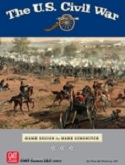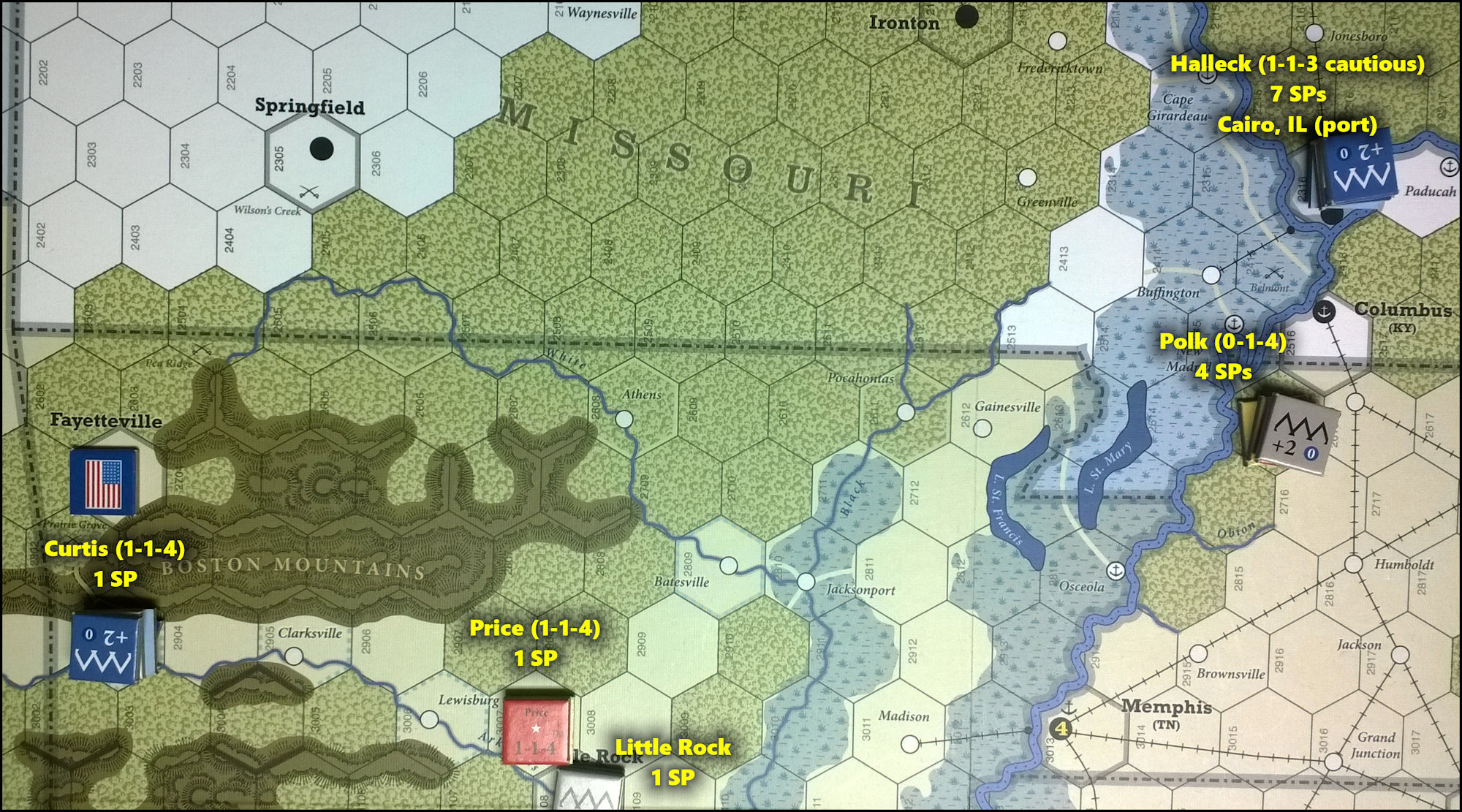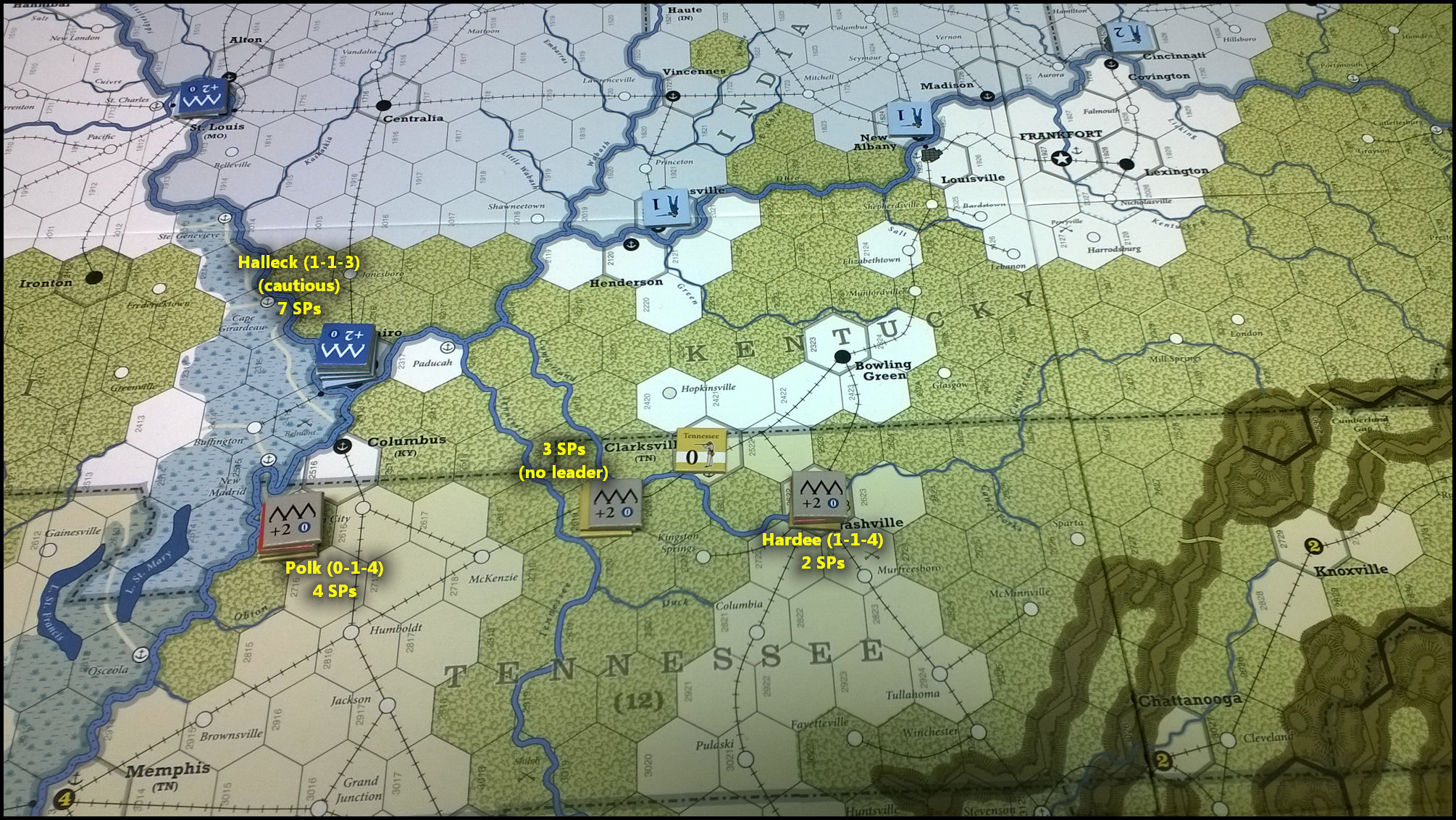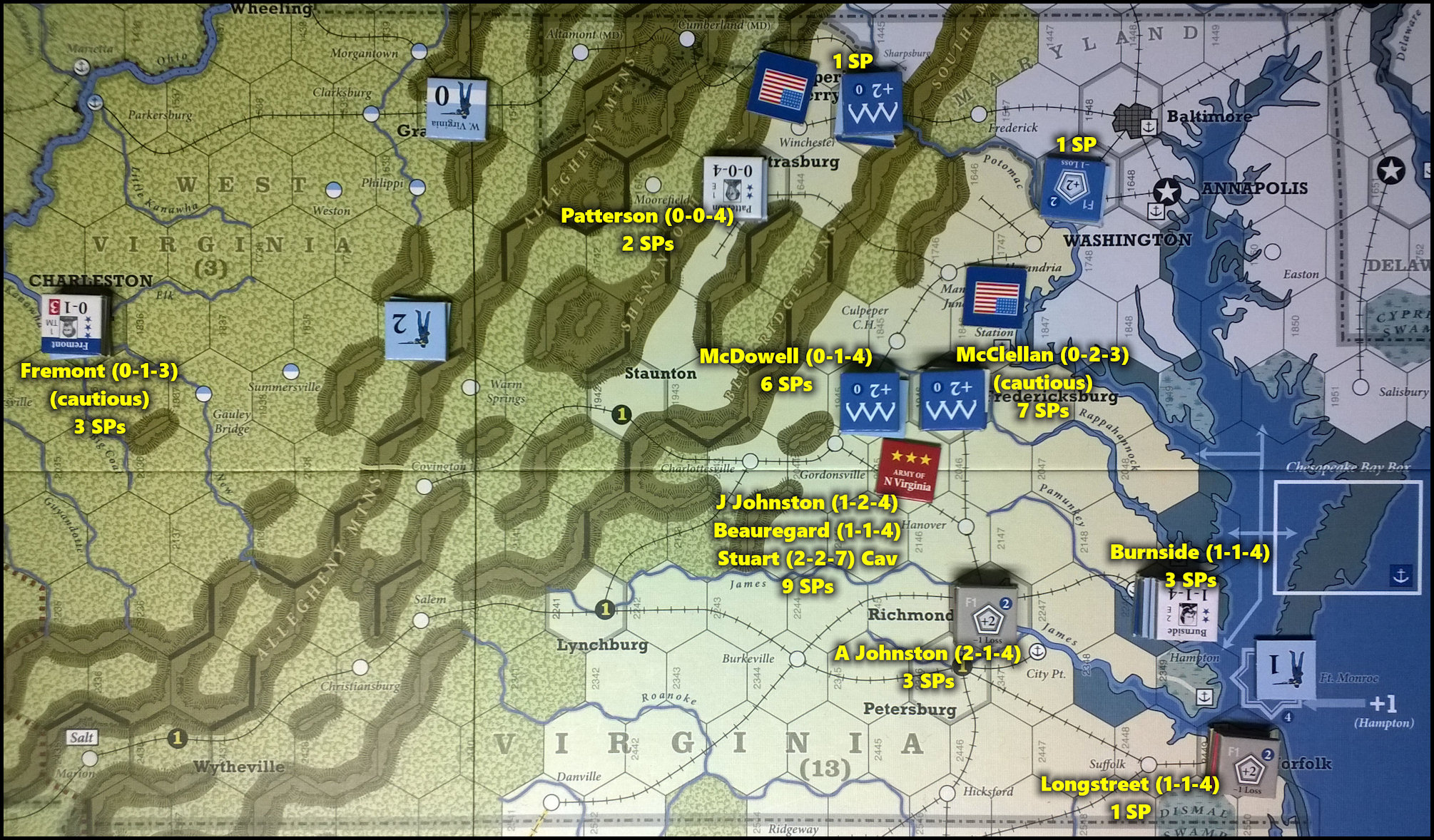Overview
Buy from
Noble Knight Games

As I mentioned in a previous article, this game initially elicited a less than favorable reaction from me when compared to
the Victory Games original. It was pointed out in a Reddit post that no one at GMT ever said anything like "this is
a re-make of the old game", other than to say it adopted bits and pieces from it (and from "For the People"). And that's true.
But I think that everyone who was familiar with the old game had certain expectations. Just look at the game board, the
game counters, the game mechanics. In my opinion this is, and was always expected to be, a re-make of Eric Lee Smith's Civil War game.
I doubt many people who bought the game said "Gee, I hope this is wildly different from the VG original". Quite the opposite.
People love the VG version and I suspect that people who bought the game (like me) were hoping that it was going to be a more
attractive and slightly "improved" version... not a totally different animal.
But it's *not* a simple re-make. And I've gotten over that now. So, I cracked open the rule book again and decided to give the game
a fresh look. I wanted to play it again with the intention of viewing it as a gaming experience separate and distinct
from the Victory Games title. I'm curious to see if I enjoy it once I shed my bias for the original. Last week I recruited
two gaming buddies, Harvey Mossman and Gary Andrews, to join me for a new campaign game.
Harvey and I have both played the game before, but Gary has not. So I agreed to play the Confederates while Harvey and
Gary will team up to play the Union.
My plan is to provide a very brief summary each week on the progress of the game and possibly interject some commentary from
the participants. We all know that the real world tends to interfere with our "best laid" plans, but I will do my best to
keep this up.
Game Turns 1 and 2 (Summer of 1861)
The Trans-Mississippi Theater
Not a lot going on here, as you would expect. Knowing that Union General Lyon was destined to die after the very first game
turn, the Union players set him in motion immediately so that he might do the maximum damage possible before his untimely (but
anticipated) demise. He moved south and attacked Confederate General Price in Springfield, MO. To everyone's surprise, he lost
the initial battle and had to come at Price a second time to drive him out of Missouri.
During the rest of the first turn, Lyon kept up the pressure on Price, but Price still held Fayetteville, AR at the end of
the turn. He was replaced on turn 2 by Union General Curtis who, although not as effective a general as Lyon, defeated
Price in battle after battle, driving him back to the outskirts of Little Rock, AR, by the end of turn 2.
(Correction: I mistakenly referenced "General Thomas" instead
of "General Lyon" in the paragraph above. Hat tip to Daniel Berger for pointing it out).

The Western Theater
Not much going on in the West either. The majority of the conflict has been occurring in the East. However, the union has built
up a decent sized force in Cairo, IL, at the confluence of the Mississippi and Ohio Rivers, and appears poised for some action in 1862.
The Confederates have invested little in this theater either, preferring to place subsistence forces in Entrenchments along
the rivers.

The Eastern Theater
The East is where all the action has taken place. Right off the bat Harvey and Gary sent Union General McDowell, with a good portion
of the 9 troops in Washington DC, across the Potomac River to capture Aquia Station and its Port. This ensures (at least temporarily)
that the lines of supply will remain open regardless of any Confederate moves short of taking down Washington itself.
After McDowell's (pre-ordained) relief of command in game turn 2, McClellan took charge of the forces invading Virginia. McDowell was
given command of another force that is also pressing south, directly alongside McClellan.
Burnside, commanding the first amphibious assault of the game, landing and taking control of the Port at West Point, VA, is helping
to close the noose around Richmond, VA, by pressuring from the east.
Union Generals Fremont and Patterson have secured all the Objective cities in West Virginia, giving control of that state to the Union.

So, other than having to pace themselves so as to not outrun their supply lines, there's nothing to stop McClellan and McDowell (neither
a "ball of fire" historically) from "blitzkrieg'ing" across the Virginia landscape. Nothing other than Joe Johnston, A.S. Johnston, Longstreet,
and a few other outstanding Confederate leaders... in charge of very few troops.
After counterattacking at Manassas Junction and winning the first battle, the Confederates were unable to hold the position and had
to retreat to prevent encirclement, thus also dashing any hopes of a sizable raid into Pennsylvania. By opting to not risk encirclement
and destruction in the North, Mark has been able to put together a sizable army of 9 SP (Army of Northern Virginia) under Joe Johnston
just north of Richmond. But it looks like it may be too little, too late. The Union forces in front of Joe Johnston outnumber
him and it's likely that more pressure on Richmond will materialize from Union Amphibious assaults.
The best case scenario for the Confederates is to hope that the Union fail their Interception roll, allowing Johnston to crush
one of the Union forces in Virginia, sending the other one scurrying back to bolster the Washington defenses. If anything should
go wrong with that plan, the Union army will be in Richmond before the end of the turn.
Final Thoughts
All three of us did a "rules review" in the days after we finished this session, just to clarify some odd situations
that popped up, and we uncovered a few things that we were doing incorrectly (mostly Supply rules).
We don't believe our mistakes will have a major impact on the game, so we're not going to reset; we'll just keep forging
ahead. But, FYI, the rules must be read carefully...
So, after 2 turns of play, the Union has accumulated 7 Victory Points:
- Fredericksburg (1), Strasburg (1) and Harper's Ferry (1) in Virginia.
- Grafton (1), Charleston (1) and Wheeling (1) in West Virginia.
- Fayetteville (1) in Arkansas.
If the Union can capture Richmond (4), Petersburg (1), Lynchburg (1) and Staunton (1), all in Virginia, along with four other points
worth of cities out West or along the coasts (via amphib assault), that will make a grand total of 18 VPs, which is 12 more than the
Benchmark Number of 6, resulting in a Union Automatic Victory at the end of Fall 1861 (Game Turn 3)!
Lots of pressure on the Confederates, for sure. Maybe too much for this early stage of the war? We'll see how things play
out after both sides have a chance to reinforce. Until next week...